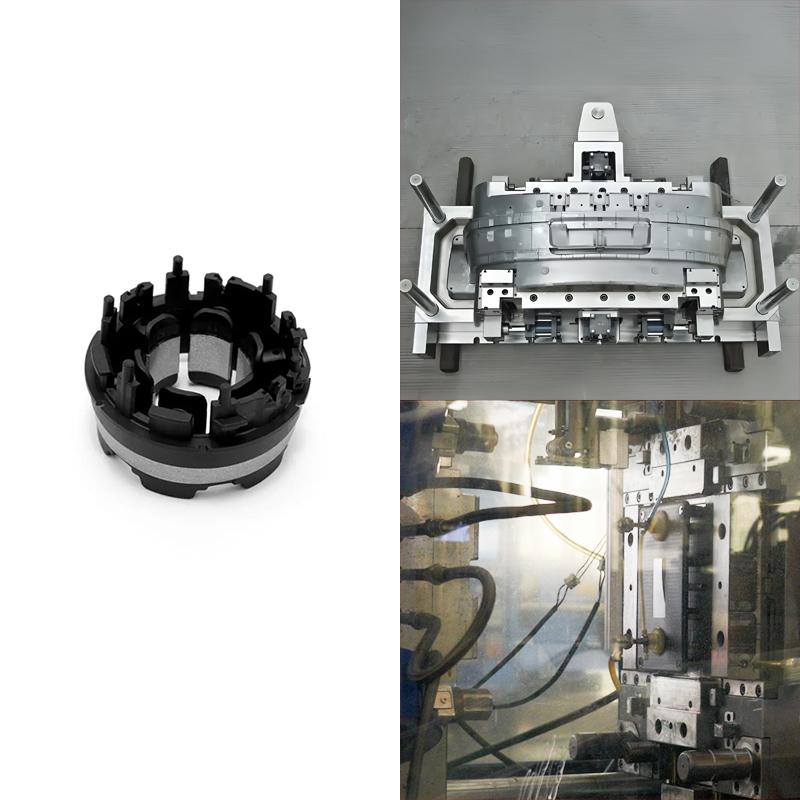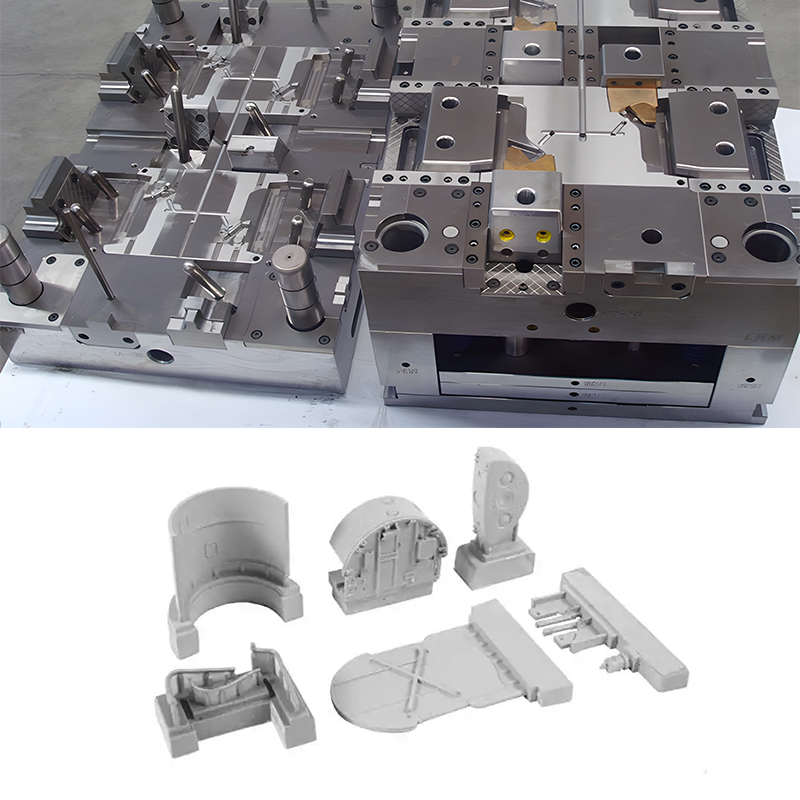Jigs and fixtures often need clarification, but these two play different roles in the manufacturing process. Jigs are devices that hold or guide cutting tools during repetitive operations. Fixtures do not necessarily hold the cutting tool but rather keep the workpiece steady in a fixed orientation during the processes. They are silent partners in the production because they act as the embodiment of precision and efficiency in the engineering world. Their capacity to substantially speed up the production process renders them crucial in manufacturing.
This article will offer insightful information on how jigs and fixtures can improve your engineering projects, giving you the accuracy and productivity you need to stay ahead in today’s production.
Understanding Jigs and Fixtures
Some machine operations do not require additional tools to hold them into place. Such machine-like turning machines have the workpiece secured in place in the chuck. However, when it comes to complex machines, they will need some guidance and precise positioning. As a result, a tool-guiding device known as a jig is needed, and a workpiece positioning tool is used as a fixture. Specifically, manufacturers normally build jigs for particular components. Their goal is to reduce the time it takes to clamp a workpiece, which ensures repeatability. The most common type of jig is a drill jig, which directs the drill to the point where it should drill a hole.
Similarly, fixtures offer stability and orientation of the workpieces during the operation process. Such operations as welding, assembly, or inspection processes.
These two tools streamline the production and establish interchangeability by sticking to the set tolerances. They connect the tolerance of the cutting tool and the work eliminating the necessity of setups of every part. Therefore, they are excellent for the mass production of identical and interchanging parts.
However, with the advancement of technology, automation, and computer numerically controlled machines (CNC), jigs may be rendered redundant because the tooth paths are digitally programmed and stored in the memory of the machine. For the fixtures, the block clamped inside the machine or vise on the workbench act as fixtures.
Types of Jigs and Fixtures
Manufacturers tailor different types of jigs and fixtures to specific processes and applications. Their understanding is crucial to facilitate good choices for the right job.
Jigs
People normally custom-designe jigs for a specified task. This ensures repeatability and accuracy in the production. The most commonly used jigs are as follows:
Template Jig
These are the simplest types of jigs. The plate serves as a template with two holes. The jig is fitted onto the workpiece. The operator directs the drill through these holes towards the workpiece, and drilling occurs. Then, the operator makes the holes at the same location as those on the template, with the same size and shape. Template jigs improve drilling process efficiency by lowering the possibility of errors and rework through accurate guidance.
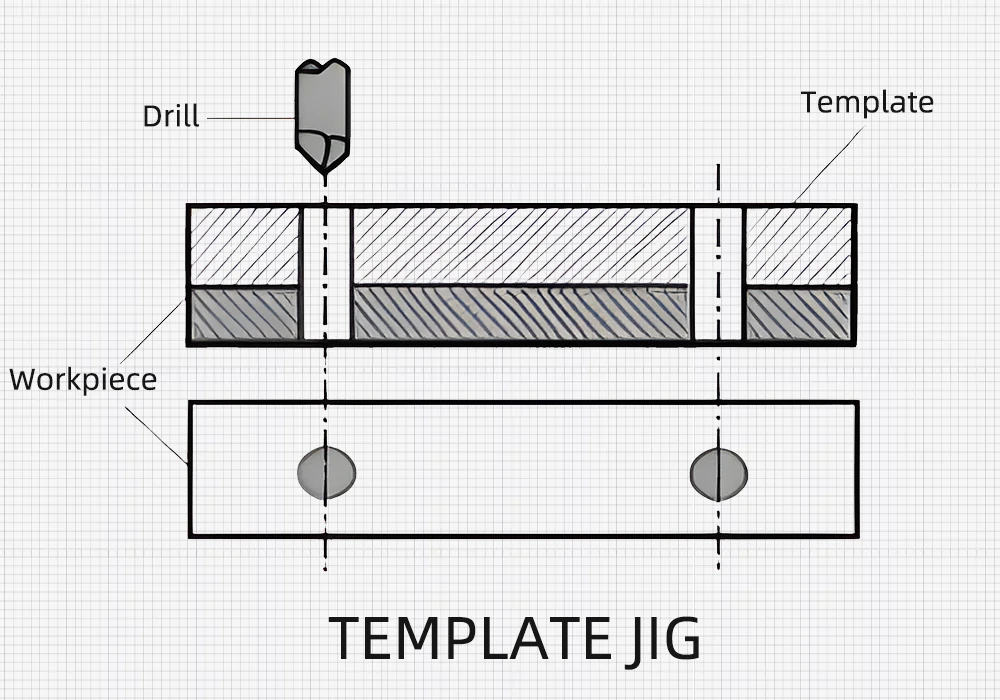
Plate Jig
By offering support with bushes on the template, a plate jig is an improved template jig. Works with a similar principle. The only difference is that the holes drilled are a bit larger and require a high level of precision between their spacing.
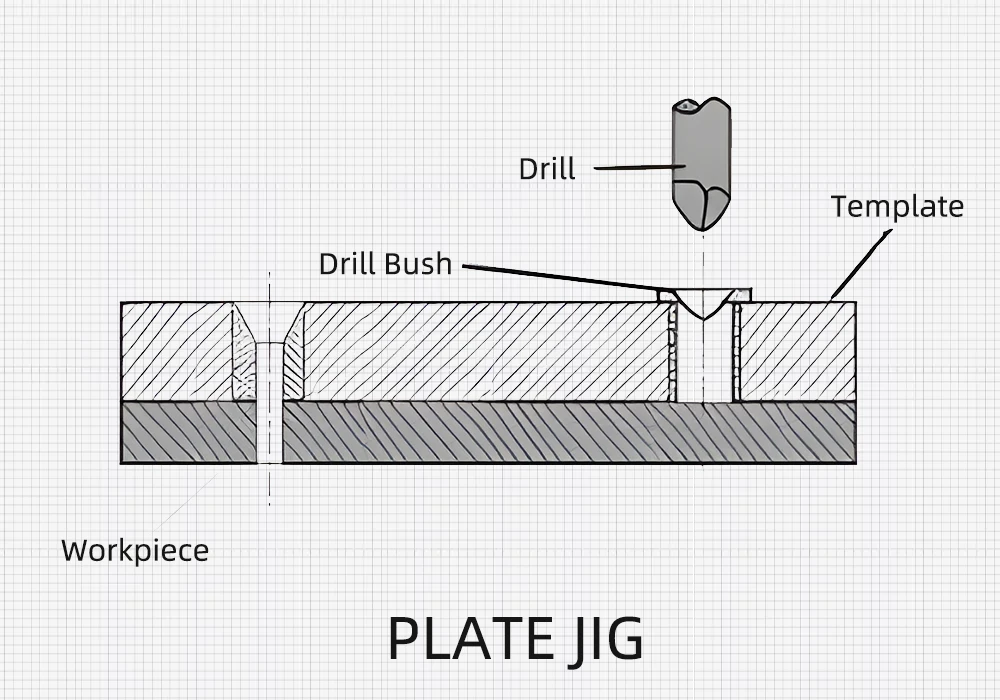
Angle- Plate jig
Just as the name suggests, it is ideal for propping up the workpiece at an angle. Typically used to drill diagonally positioned holes.

Diameter Jig
It enables drilling of rounded workpieces that are hard to secure using other jigs. For instance, making radial holes in a cylindrical or spherical workpiece

Channel Jig
This jig features a channel-like cross-section. Operators mount the workpiece within the channel and secure it by turning a knurled knob. The drill bush then guides the tool during operation.

Leaf Jig
Leaf jig features a hinged leaf or plate to provide effortless loading and unloading of the workpiece. The hinged leaf does not fully enclose the component.
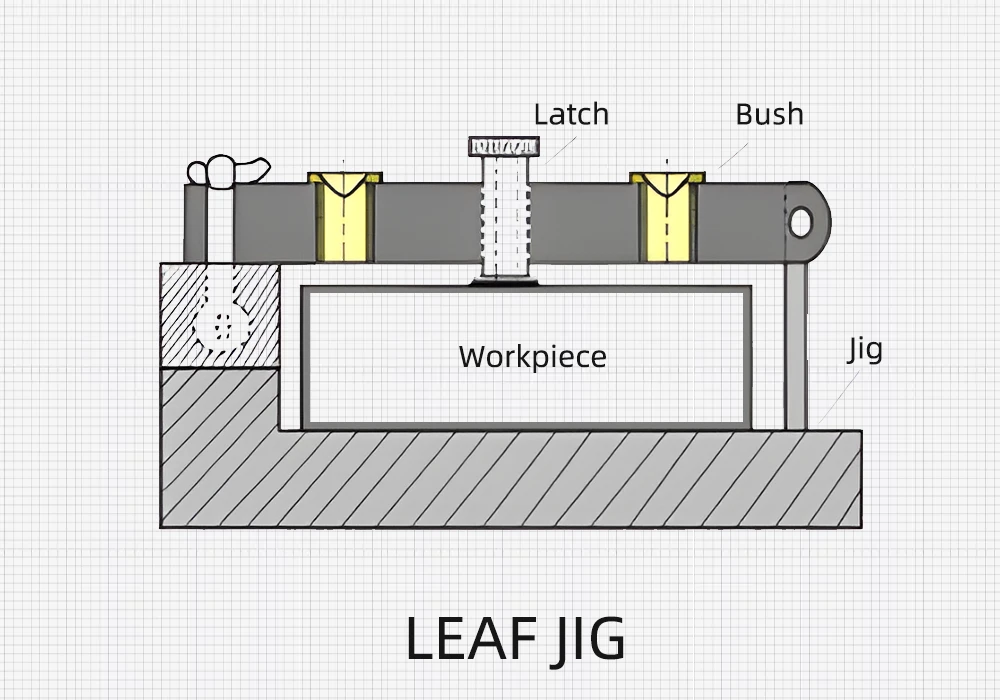
Ring Jig
The workpiece is stationary and clamped onto the drill body while the drill bushes guide the holes made. It is suitable for drilling holes on circular flanged parts
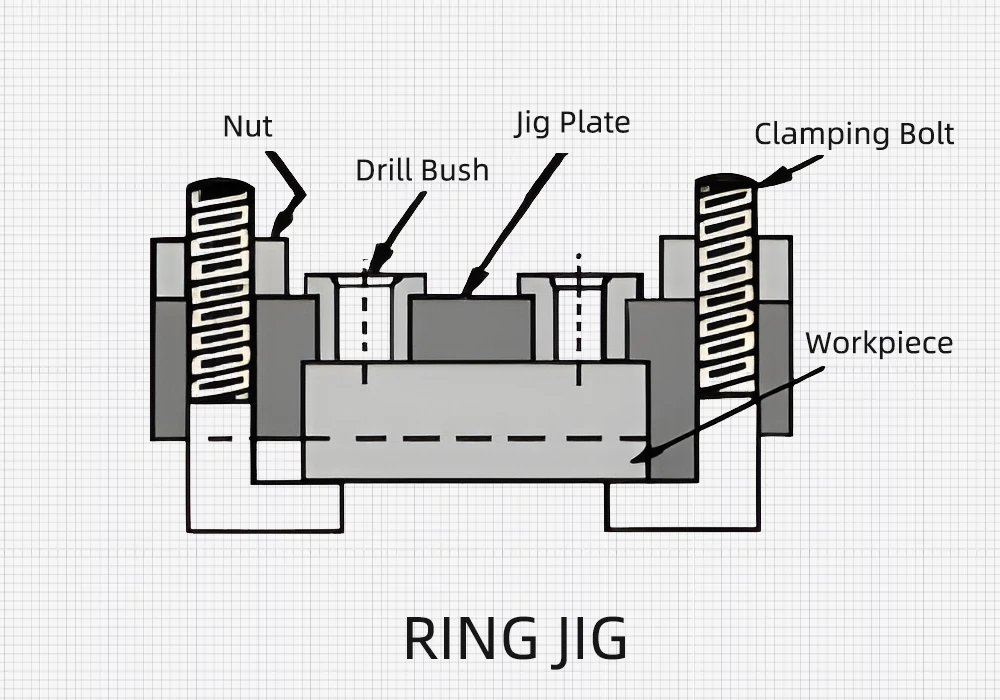
Box Jig
Box jig has a box-shaped component where the work is tightly enclosed in it. Operators can drill or machine the work from numerous angles at a single setting, depending on which face of the jig faces the tool.
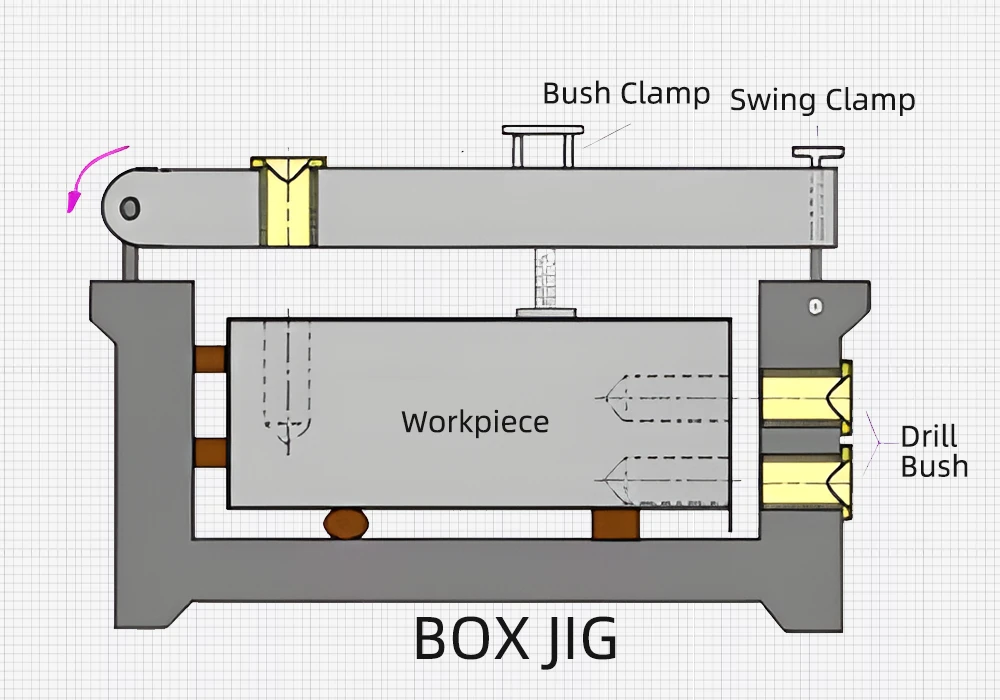
Universal Jigs
These jigs are versatile and can be adjusted to fit different workpieces. It can accommodate various shapes and sizes capable of a diverse range of applications.
Fixtures
The primary objective is to guarantee accurate workpiece positioning during the machining process. Fixtures prevent workpieces from unexpectedly flying off the work table, which reduces errors and enhances worker safety. Moreover, operators can position them at any angle, allowing activities in several directions.
Turning Fixtures
They are usually fixed on the machine spindle or a face plate. Typically, turning fixtures are helpful for more intricate pieces created on lathes or turning machines. They provide stability and orientation and are suitable for operations requiring a rotation of workpiece around a central axis.
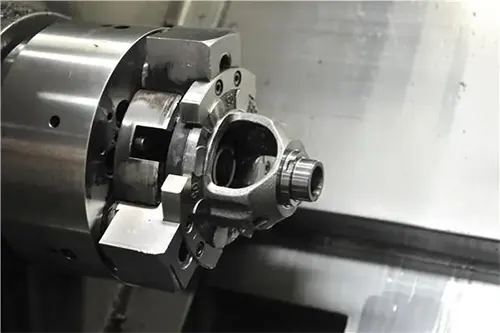
Milling Fixtures
They are generally fixed on the nose of the machine spindle and are secure by the use of fasteners. The table is placed in the correct position around the milling cutter. The workpieces are, therefore, placed on the fixture base and tightly clamped before the work commences.
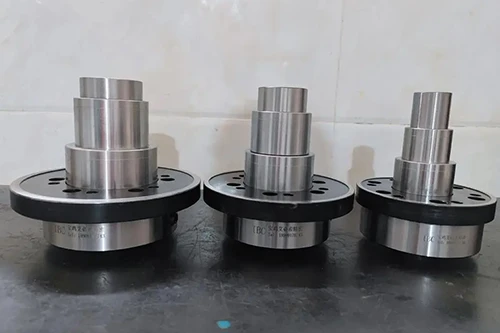
Drilling Fixtures
Sometimes, drilling fixtures can be used instead of or in addition to jigs. They are made up of a hole and a bushing.
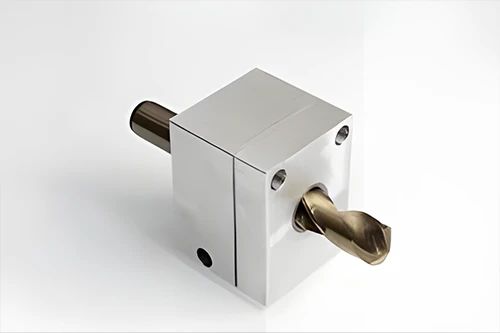
Broaching Fixtures
Parts are held firmly in place by broaching fixtures while being shaped by broaching machines. Keyways, holes, and other specialized shapes are frequently created in workpieces using this technique.

Grinding Fixtures
They support work during the grinding process. Simple or tapered mandrels are used in cylindrical grinding for external surface finishing. The workpiece is located and held in place on the mandrel utilizing the bore, which enables the outer surface to be machined correctly and concentric to the bore. The internal grinding chuck acts as a fixture.
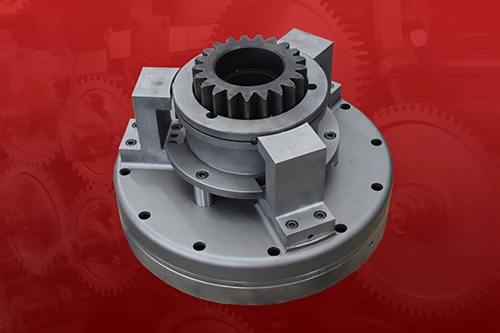
Boring Fixtures
The design of the fixture integrates all the essential features of jig and fixture construction. Boring fixtures securely hold the workpiece to ensure precise alignment during boring operations. Its involvement in basic processes allows for a simplified structure.
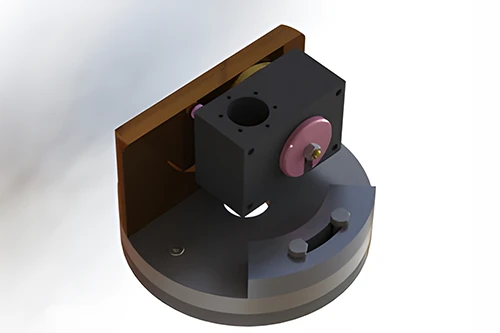
Tapping Fixtures
Holds the workpieces in place to make internal threads on drilled holes. These fittings are necessary for irregular shapes or imbalanced parts, particularly if they need bulk tapping on the pieces.
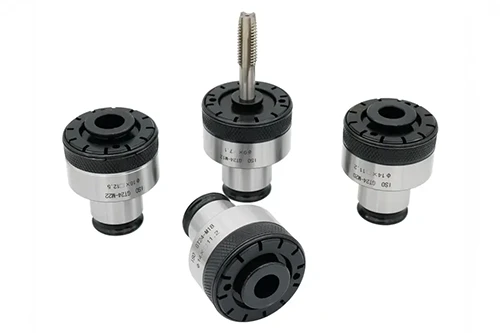
Welding Fixtures
Offer support to different welded objects, holding them in place to prevent distortion. Light clamping is employed but must be placed far away from the welding region. For the fixture to withstand the welding stresses, it needs to be quite rigid and strong.
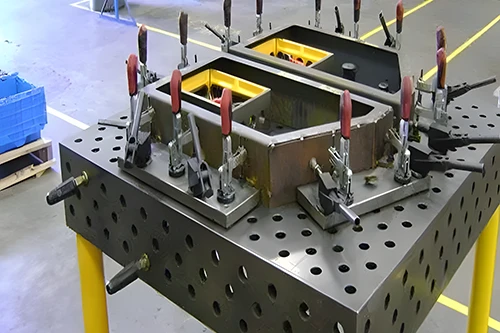
Assembly Fixtures
Assembling fixtures are used to support different components in the proper relative location during assembly.
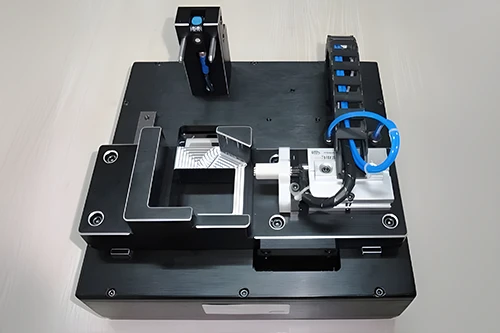
Tailstock Fixtures
Supports long and slender workpieces during the grinding process. By adding extra stability and support, these fittings hinder the workpiece from bending or deflecting. Suitable for cylindrical grinding tasks on spindles, long shafts, and other extended components.
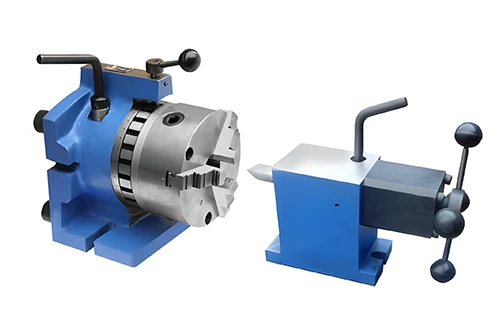
Benefits of Using Jigs and Fixtures in Engineering
Increased Productivity
The amount of time needed to mark, measure, and clamp workpieces for each operation is greatly decreased using jigs and fixtures. Reducing the need for manual adjustment can increase speed throughout the manufacturing and inspection processes. Jigs and fixtures accelerate production and boost throughput by enabling rapid and reliable setups and tool/workpiece positioning.
Improved safety
Jigs and fixtures lower the risks of accidents by offering a secure and stable platform for operations. If, for instance, repetitive work done manually would lead to boredom and fatigue, increasing the likelihood of accidents.
Сокращение расходов
An increase in productivity while minimizing errors ultimately lowers the cost of production. This is a desirable alternative for manufacturers trying to streamline their operations.
Increased Accuracy And Precision
By providing a secure and stable platform, there’s a guarantee for consistent work. This level of accuracy is very critical in some operations where even a minor deviation can cause severe consequences. Examples in industries like aerospace and automotive.
Reduced Waste
Jigs and fixtures aid in minimizing mistakes and misalignments that might result in material waste by precisely guiding cutting instruments and workpieces during procedures.
Reduced Labour
This technique automates production by increasing throughput and decreasing the number of cycles that need measurement, decision-making, and manipulation.
Versatility and Flexibility
Some jigs and fixtures offer versatile operations, allowing the operator to accommodate many workpieces without custom tooling. This is very important in prototyping and small-scale production.
A few suggested design elements improve the general operations of jigs and fixtures. Here are some crucial design factors to consider.
For the highest level of precision, machine fixtures need to be precisely positioned. Constricting the fixture is, therefore, essential. Since excessive restraint could result in inaccurate information, it would be preferable if you could prevent it.
Wherever possible, design fixtures and jigs for one-handed operation. As a result, operators can hold onto the fixture with one hand while using the other to position or steady the part.
Jig and Fixture Design Considerations
1. The material used for a jig or fixture needs to be chosen carefully. For instance, a fixture or jig that is used for multiple pieces needs to be constructed from a sturdy material, such as hardened steel. Polymers and wood are examples of substitute materials.
2. Create a fixture or jig that can hold the part throughout secondary operations without the need for human assistance.
3. Take the fewest steps as possible while creating a design. This shortens cycle times and repeats motions that cause weariness.
4. Take into account the integration of the jig or fixture with the entire manufacturing process.
5. Select geometries that draw attention to misalignment errors. This may lower accidents that happen at work.
6. Proper ejective components are to be incorporated to push the workpiece out after the process in case there’s a need.
Приложения
Сварка
Jigs and fixtures are ideal for holding workpieces together and in the correct position during processes that engage high temperatures like welding. They prevent movement and ensure the accuracy of the welds.
Сборка
Jigs and fixtures play a crucial role in ensuring precision and accuracy during this process. They accurately align parts and ensure they perfectly fit together. This is advantageous in high-volume assembly lines.
Inspection
Fixtures enable accurate measurements by providing a correct orientation of parts. Jigs can also help in guiding inspection tools such as gauges or probes.
Metalworking
Operations like milling and drilling occur with the help of jigs and fixtures. They ensure consistency and accuracy are maintained throughout the processes.
Woodworking
Tools like saws and routers are guided using jigs for proper cutting and making holes or joints. During processes like sanding or gluing, fixtures align and secure the wood pieces.
Медицинские приборы
Delicate medical devices need to be positioned accurately during assembly. This ensures they meet their precise specifications.
Jewellery Making
Jewelry pieces often need to be held in place during the setting of stones. Proper depth and alignment must be achieved during the process for the part to come out as expected.
Innovations
In modern manufacturing, jigs and fixtures advancements have evolved to meet the demand for increased productivity. Some of these are:
Automated and CNC-Controlled Fixtures
Operators integrate these into automated product lines like robotic arms and other machines. They can adjust automatically to make precise adjustments and reduce human error. Thus, they support repeatability in operations.
Smart and IoT-Enabled Fixtures
Real-time monitoring of factors like alignment, temperature, and pressure is made possible by the integration of sensors and Internet of Things technologies into jigs and fixtures. This assists in product control and maintenance purposes.
3D Printed Jigs and Fixtures
3D printing facilitates possible changes while designing. Some can also be produced quickly if they are suited for certain activities.
Ergonomic and Human-Centric Design
Innovations have led to the design of jigs and fixtures that are easier to adjust and operate, reducing risks and injuries experienced during work.
Combining Technologies
Hybrid fixtures and jigs can carry out multiple functions, minimizing the need for different setups. They use different materials to balance the weight and strengths.
Eco-Friendly Design
Climate consideration is an important aspect of recent technology. The use of recycled or eco-friendly materials in the manufacturing of jigs and fixtures is indisputable.
Заключение
Jigs and fixtures are the backbone of productivity, and their role in ensuring product quality is undeniable. They help production stay competitive and ensure processes are reliable. With advancements in technology, they will continue to play a vital role in the industry to meet new opportunities and challenges.



